I’ve been working on a few ideas for our cousin who goes to a lot of Wine & Jazz festivals in his RV. He asked me about painting a wall hanging that could hang on his RV, as well as in his home when they’re not on the road. Seemed simple enough. (Emphasis on seemed.)
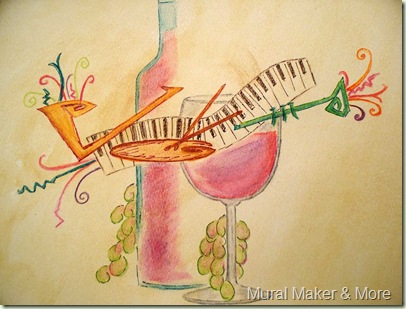
First I did a quick sketch with watercolor pencils. I love working with watercolor pencils because I like to sketch. Then you just add a damp paintbrush and smooth out the pencil strokes. The colors are not as vivid as I’d like and I’m not loving the layout of the grapes, but I like the shape. So I can change their placement, I think.

Next I tried a different composition. Wine glass, drums, keyboard & saxophone. Nope. Don’t like this one either. Something about that keyboard that bugs me. Maybe it’s because everything butts up against each other.
Then I thought about trying a tone-on-tone painting. I am loving silhouette paintings lately. Not actual silhouettes, like profiles. But shading of similar color hues and values. What is the easiest & quickest way to do this?
I knew I could cut a stencil, but thought that would take too long. Plus, I’m basically stencil-challenged. Really, I am. Don’t know why. I just always have problems.
Then I remembered this stuff I bought years ago. Crafters never get rid of anything, do we? You just never know when you’re need something.
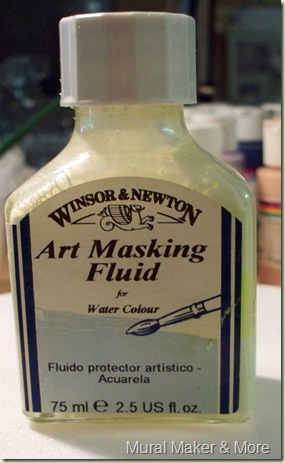
Watercolorists use this a lot to mask off areas. I tried a little sample and it seemed like it would still work. It’s liquid latex. You just brush it on, paint over it, and peel it off after the paint dries. Simple, right? Well, there are a few issues to keep in mind.
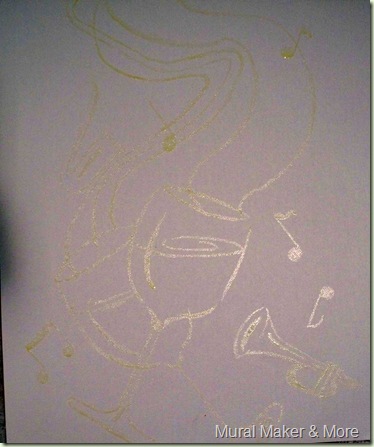
You can’t sketch your design because the pencil strokes would show once you lift the mask. So I just painted freehand. It’s a little hard to see on a white canvas.
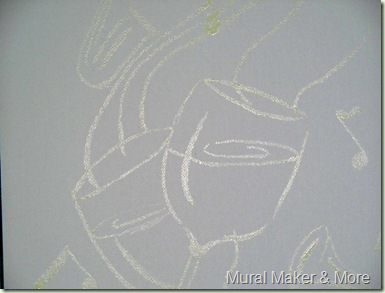
You also have to keep wetting your brush, otherwise the latex will dry. Then you get little beads of rubber on your paintbrush. It may just take some practice – I’m not sure yet.
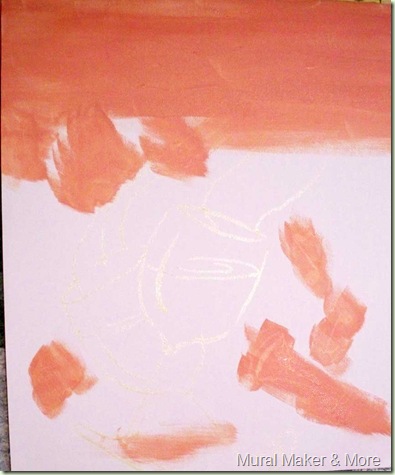
The other issue is you have to think ahead in steps. This was challenging because I’ve never done a mask before. It would’ve helped to have a sketch of the design but, oh well.
I started with Ceramcoat Indiana Rose for the upper part. The blobs you see are the music notes. I was thinking I’d have these the pale pink, not white. Duh! I had already put the mask on the white canvas! Remember what I said about thinking ahead in steps? Yeah, I didn’t do too good with that.

Then I added Santa Fe Rose to Indiana Rose and wet-blended it into the middle. And Santa Fe Rose to Cinnamon on the bottom. I’ve never attempted a strie – graduation of color. I’ve seen it done on TV, but I think it takes some practice.
After the first coat, I did a second using FolkArt Floating Medium to keep the paint from drying too quickly. Floating medium gives you more ‘open’ time then just water. Love that stuff!
Then I just let it dry. There’s probably a trick to that too – how long, etc. I have no idea. After I while I started peeling off the mask – trying to remember where I actually put it!
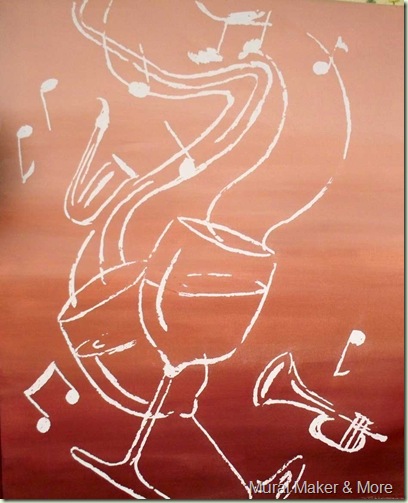
You take a pencil eraser to get a piece started and then you lift off the liquid latex. About this time, Hubs came into the studio and asked why I wasn’t videotaping the whole thing.
Are you kidding me? I had absolutely no idea what I was doing or how this was going to work out. The last thing I needed was a video camera rolling. He thought the naturalness and spontaneity would be a good thing on film. Yeah – easy for him to say.
So at this point I looked at the dang thing painting, trying to decide if it was finished or what else to do. When you can’t make a decision, WALK AWAY until another time.
But no, not me. I wanted to hurry and get it done. I started painting the notes with the darker Cinnamon, the swirls with Indiana Rose. Big mistake. Big. Yuck.
Now I have to go back and white it all out. White over Cinnamon takes quite a few layers. Ugh.
So my first attempt at a reverse stencil & strie didn’t work as easily as I’d planned. It may have been just as easy to cut my own stencils. But it was fun to try a new product.
I will always share my failures with you, as well as triumphs. It’s how I learned to paint. Years and years of ‘failures’. But, it’s pretty hard to have a complete failure with paint because you can just keep adding layers. See why I like it so much? There are many paintings that have a full painting underneath.
When I die and if my work becomes famous, you might want to scratch off the top layers of paint. There’s probably something underneath!
That is so neat! How fun!
{Rebekah)
What a neat idea, I’ve never tried this but now I have to. Your project looks great, I love the texture of the lines and the color. Lovely! OMG, I repaint over my failed paintings all the time. I’ve also been known to scrub a canvas, re gesso it and paint away! Keep on painting!
Even with your tips, I could’t paint this great! YOU have a gift, and are very talented. Thanks for linking up! Jenn